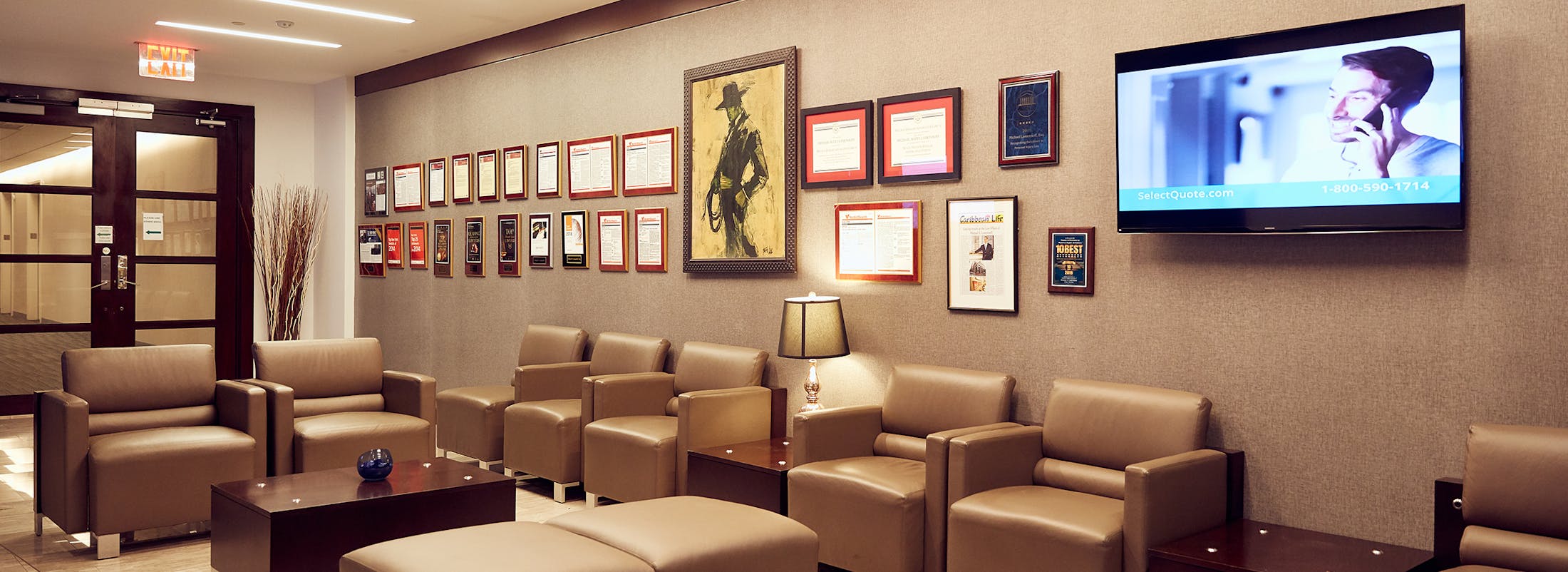City Council Passes Revised Construction Safety Bill
Manuel Colorado, 36, lost his balance doing construction work in Brooklyn and fell 19 feet to his death. Only days later, 58-year-old Gurmeet Singh died after falling eight stories off a scaffold in Manhattan, and twelve days after that, Lukasz Stolarski, who was 31, died when he fell more than one hundred feet from a building in Midtown. If you work in construction in New York City – or if you love someone who does – learn what a NYC construction accident attorney can do to help if you are injured.
New York City’s ongoing construction boom has brought new vitality to some parts of the city and has sparked a building frenzy in all five boroughs, but the prosperity has had a high cost – a disturbing rise in the number of construction work-related deaths. In response, the New York City Council approved in September a controversial proposal that mandates additional safety training for the city’s construction workers. But will it reduce injuries and fatalities?
According to the New York Times (September 17, 2017), “Eight construction workers have died so far in 2017, according to statistics from the city’s Department of Buildings. Twelve workers died each year in 2016 and 2015, compared with eight in 2014. Many of the dead have been immigrants, often undocumented and afraid to speak out about poor training or unsafe conditions.”
WHAT DOES THE NEW LAW REQUIRE?
The City Council action came only days after two workers died on the same day in separate Manhattan construction site accidents. Workers at most construction sites in the city will receive a minimum of forty additional hours of training under the new statute. The new law also sets aside $5 million to help laborers and contractors who are unable to afford the cost of the extra safety training, and it also provides for penalties when a construction site is not in compliance.
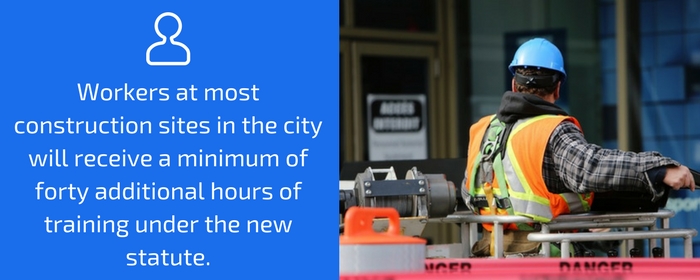
The city expects to spend another $3 million to $6 million on enforcement, according to the New York Daily News. While the new training requirement met with stiff opposition – particularly from the Real Estate Board of New York – everyone agrees that something had to be done about construction site safety in the city. But is more training the real answer to the problem?
City Council Speaker Melissa Mark-Viverito believes it is at least part of the answer. She told reporters, “We are not as a legislative body going to sit by and allow workers to continue to die.” However, Real Estate Board of New York president John Banks believes the new measure “will result in many fewer construction job opportunities for New Yorkers.”
ARE THERE EXCEPTIONS TO THE NEW SAFETY TRAINING REQUIREMENT?
The new law waives the training requirement for those construction workers who have completed an apprenticeship, provided that the apprenticeship is comparable to the required training. It also lets construction workers go to work after the first ten hours of training and allows them to finish their safety training as they work.
But even with more safety training and more vigorous enforcement, some construction injuries and fatalities are probably inevitable. Hazardous physical conditions, defective or worn-out safety equipment, and a failure to communicate clearly and consistently remain the primary causes of accidents at construction sites. But are those the kinds of conditions that New York’s construction workers should routinely expect?
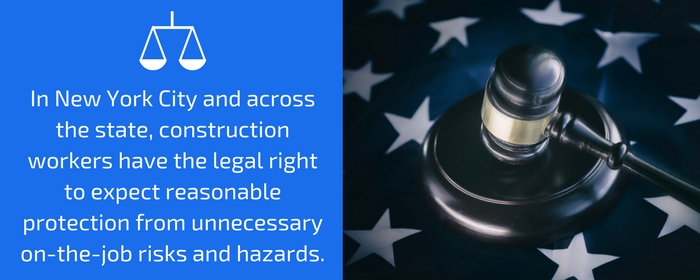
Absolutely not. In New York City and across the state, construction workers have the legal right to expect reasonable protection from unnecessary on-the-job risks and hazards. An injured New York City construction worker will need the sound and precise legal advice that an experienced New York construction accident lawyer can provide.
HOW ARE MOST INJURED CONSTRUCTION WORKERS COMPENSATED?
Most construction workers injured in New York will be able to receive workers’ compensation benefits. Under New York law, every employer must carry workers’ compensation insurance. Workers’ comp generally pays for an injured worker’s medical expenses, for his or her lost wages, and for the expenses arising from partial or permanent disability.
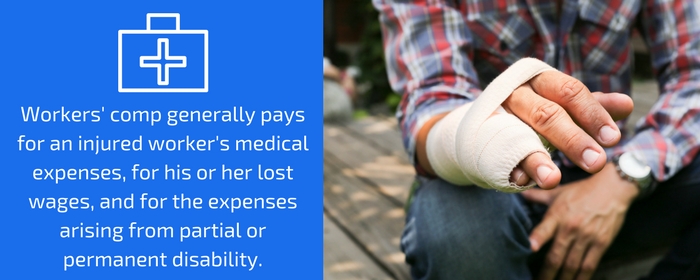
However, in particular cases as allowed by state law, an injured New York City construction worker may be able to pursue a personal injury lawsuit unconnected to worker’s comp insurance. When a New York construction worker is injured because a third party – that is, someone other than the worker’s employer – was negligent, that worker in most cases may pursue a personal injury lawsuit against the third party (or the third party’s employer).
Some construction-related injuries are devastating or even permanently disabling; brain and spinal cord injuries, for example, injuries requiring amputations, and paralysis are just some of the conditions that will require the maximum possible compensation – a much larger amount than the workers’ comp system can provide.
IF YOUR CONSTRUCTION SITE IS UNSAFE, WHAT CAN YOU DO?
New York City construction workers know exactly how dangerous construction work is. If you are a New York construction worker, and if you work at a site that is not in compliance with local, state, or federal safety regulations, speak first to your foreman, manager, or supervisor. If that doesn’t help, contact the City Department of Buildings or a personal injury attorney who routinely represents injured New York construction workers.
If you sustain an injury while you’re working at a construction site, precisely what steps should you take? Seek medical attention at once and report the accident and injury to your supervisor or foreman. Then, as soon as possible, discuss your rights and options under the law with an experienced New York construction accident lawyer. If you’ve been injured by negligence, compensation is your right.
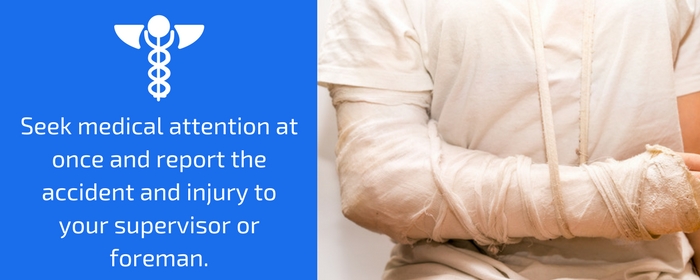
Victims of third-party negligence – who can prove that the third party’s negligence caused their injuries – are entitled in New York to full reimbursement for their accident-related medical expenses, including all future medical costs, and full compensation for lost wages, including lost future earning capacity. Victims are also entitled to compensation for their physical and emotional pain and suffering and for their “loss of the enjoyment of life.”
Slowly, the safety situation for construction workers in New York is improving. The new safety training requirement may or may not be the answer, but it’s a first step. Officials in the city government, the unions, and the construction industry are all aware of the ongoing safety issues at the city’s construction sites, and they are slowly taking the steps that will ensure a safer future.

